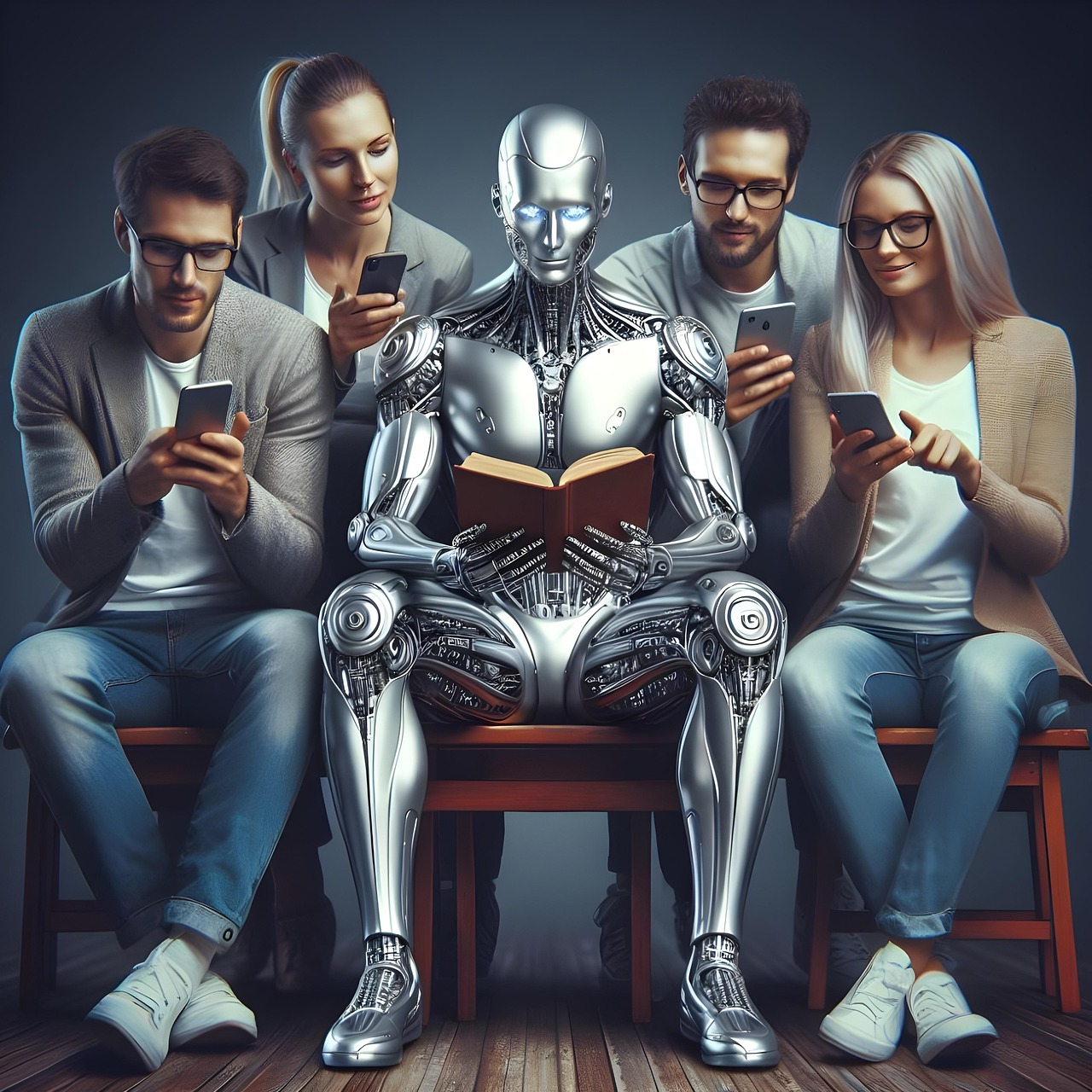
Technologies is essential is advancing at an unprecedented pace, reshaping the way we live and work. In this rapidly changing environment, it’s not only emerging tech trends that are transforming the future but also the roles of IT professionals themselves. Research from Gartner on strategic technology trends indicates that the most impactful innovations will disrupt industries and drive business growth in the coming years.
What does this imply for you? The message is clear: keeping up with new technologies is essential to safeguarding your career for the future. In this article, we’ll guide you through the leading technology trends poised to redefine the tech world and highlight the key skills you need to excel in these areas.
Read more about The importance of financing
Read more about Technologies is essential
Kicking off the list of emerging Technologies is essential to trends is the hottest topic in 2025: generative AI! Generative AI is taking center stage, transforming industries with its ability to produce highly realistic content—from text and visuals to audio and advanced simulations. Innovations in models like GPTs and multimodal systems are unlocking new possibilities in content generation, design automation, and interactive experiences.
This Technologies is essential is boosting efficiency while changing how companies tackle challenges, engage with customers, and drive creativity. In 2025, businesses will increasingly weave generative AI into their operations to accelerate innovation and deliver tailored services at scale.
Quantum computers utilize the principles of quantum mechanics to perform calculations exponentially faster than classical computers for certain applications. This year, we’re witnessing quantum computing applied in areas like cryptography, Technologies is essential—where it could potentially break codes previously deemed secure—and in drug development, enabling precise molecular simulations that accelerate discoveries.Though still in its early stages, quantum computing has the potential to transform industries by solving problems beyond the reach of conventional computers.
Next up is 5G! The fifth generation of mobile networks promises much faster download and upload speeds, broader coverage, and more reliable connectivity. The rollout of 5G is drivingtransformative Technologies is essential such as IoT, augmented reality, and autonomous vehicles, which rely on high-speed, low-latency networks.This technology is vital for real-time communication and managing massive data streams efficiently, paving the way for a new era of innovation.
The latest advancements in Virtual Reality (VR) are delivering increasingly immersive and lifelike experiences. With better display quality, improved motion tracking, and interactive features, VR is expanding in gaming, professional training, and therapy.Modern VR devices are also becoming more comfortable and energy-efficient, which could drive wider adoption and integration into everyday activities.
In 2025, Augmented Reality (AR) is expected to become a major trend, extending its reach in both consumer and enterprise applications. With advancements in AR hardware, such as sophisticated AR glasses and enhanced mobile devices, users can enjoy richer, more interactive experiences.
AR is set to reshape industries like retail, real estate, and education by improving how people visualize products, learn new skills, and interact with their surroundings. By seamlessly layering digital information onto the real world, AR bridges the gap between physical and digital experiences.
IoT in smart cities integrates numerous sensors and connected devices to gather data for efficient management of resources, services, and infrastructure. This includes monitoring traffic and public transportation to ease congestion, using intelligent energy grids to optimize electricity usage, and deploying connected systems to enhance public safety and emergency response. As urban areas expand, IoT helps tackle growing complexities and improves residents’ quality of life.
Biotechnology is transforming agriculture by enabling the creation of crops with improved characteristics, such as higher resistance to pests and diseases, better nutritional content, and increased yields.Tools like CRISPR gene editing allow the development of crops that can endure environmental challenges such as drought and high salinity. This is vital for adapting to climate change and ensuring global food security.
Autonomous vehicles rely on AI, sensors, and machine learning to operate without human intervention. Although fully self-driving cars are still in progress, various levels of automation are being integrated into public transit and logistics systems. These developments can reduce accidents, improve traffic flow, and lower emissions.
Blockchain, originally created for Bitcoin, is now being applied across industries for its ability to increase transparency, enhance security, and prevent fraud. Its applications include tracking goods in supply chains, implementing secure voting systems, and managing protected medical records.Not confident with Blockchain yet? Enroll in the Professional Certificate Program in Blockchain and learn everything from basics to advanced concepts in just 4 months! 🎯
Edge computing processes data close to where it is generated instead of sending it to a central cloud. This is crucial for applications that need real-time responses without the delays of cloud processing. Examples include autonomous vehicles, industrial IoT systems, and local data processing in remote areas.
Personalized medicine tailors diagnosis and treatment to an individual’s genetic makeup, environment, and lifestyle. Advances in genomics and biotechnology allow physicians to select therapies that maximize benefits while reducing side effects.This approach is particularly impactful in cancer treatment, where therapies can specifically target genetic mutations, leading to better patient outcomes.
Neuromorphic computing focuses on building computer chips modeled after the human brain’s neural networks and processing methods. These chips handle information differently from conventional computers, allowing more efficient processing for tasks like pattern recognition and sensory data analysis.This technology can deliver major improvements in computational efficiency and energy use, especially for applications that require real-time learning and adaptive responses.
Developments in green energy technologies aim to boost the performance and lower the costs of renewable energy sources such as solar, wind, and bioenergy. Notable advancements include novel photovoltaic cell designs, wind turbines that function efficiently at lower wind speeds, and biofuels derived from non-food biomass. These innovations play a vital role in reducing global carbon emissions and supporting sustainability initiatives.
Modern wearable gadgets continuously track health indicators such as heart rate, blood pressure, and glucose levels. These devices sync with smartphones and leverage AI to interpret data, providing personalized health insights and early alerts for potential issues. This technology is shifting healthcare toward preventive measures and individualized wellness monitoring.
XR, which includes virtual reality (VR), augmented reality (AR), and mixed reality (MR), delivers immersive training environments. Sectors such as healthcare, aviation, and manufacturing use XR to simulate real-world scenarios safely. This approach enhances learning outcomes, increases engagement, and reduces training expenses.
Voice technology has advanced significantly, enabling devices to comprehend and process natural speech more effectively. It is widely used in smart speakers, home automation, and customer service applications. Voice control enhances accessibility, convenience, and hands-free interaction with technology, and is increasingly integrated into cars and public environments.
Commercial spaceflight is progressing with companies like SpaceX and Blue Origin leading the way. The goal is to make space experiences available to more than just astronauts. Current options include brief suborbital flights that provide minutes of weightlessness, with future plans for orbital travel. Space tourism opens new frontiers for adventure and drives aerospace in
Synthetic media, created entirely by AI, includes deepfakes, virtual influencers, and automated video content. While this technology presents ethical challenges, it also offers vast potential in entertainment, education, and media production. AI-generated content is becoming increasingly indistinguishable from material created by humans.
Robotics has advanced to develop machines capable of executing intricate tasks independently or with very little human intervention. These robots are utilized across multiple industries, such as manufacturing, where they handle high-precision operations; healthcare, where they assist in surgeries; and domestic settings, serving as personal helpers. Progress in artificial intelligence and machine learning is enhancing robots’ abilities, making them more versatile and responsive.
AI plays a crucial role in strengthening cybersecurity by automating intricate tasks related to threat detection and response. AI tools can process massive datasets to identify unusual patterns, anticipate potential risks, and deploy defenses in real time. This capability is essential in countering the growing complexity and frequency of cyberattacks.Advance your skills in ethical hacking, network protection, risk management, and more with the trending Cyber Security Expert Masters Program—complete in just 4 months. Enroll now! 🎯
Digital twins are virtual models of physical objects used for simulation, monitoring, and maintenance. They are widely adopted in manufacturing, automotive, and urban planning to enhance efficiency and foresee potential problems. By testing changes in a virtual environment, businesses can reduce the cost and time associated with real-world experiments.
Sustainable technology is an emerging trend as companies increasingly focus on environmentally friendly innovations to fight climate change and minimize ecological impact.This includes technologies designed to cut energy usage, reduce carbon emissions, and support circular economy practices. Examples range from renewable energy-powered data centers and energy-efficient devices to AI solutions that optimize resource management. Sustainable technology is transforming business operations with a focus on long-term environmental responsibility.
The drive toward sustainable technology is fueled by rising consumer awareness, tighter regulations, and the need for businesses to demonstrate corporate responsibility. Organizations are leveraging AI, IoT, and blockchain to improve sustainability in areas such as supply chains, waste management, and energy systems.By 2025 and beyond, adopting sustainable technology will signal a company’s commitment to the environment and provide a competitive edge, positioning forward-thinking organizations as leaders in a market increasingly conscious of ecological impact.
Telemedicine enables patients to consult healthcare professionals via digital platforms, reducing the necessity for in-person visits. It proved critical during crises such as the COVID-19 pandemic and is evolving into a standard mode of delivering medical care.
Nanotechnology involves manipulating materials at the atomic and molecular scales to create or enhance products with unique properties. Applications range from more efficient drug delivery systems to advanced materials that improve performance and smaller, high-performance electronic chips.
AI Trust, Risk, and Security Management (AI TRiSM) is an emerging approach that ensures AI systems are safe, reliable, and ethically used. It addresses the need for transparency, risk management, and security throughout an AI system’s lifecycle.AI TRiSM helps organizations handle AI-related risks while building trust with stakeholders and meeting regulatory requirements. It involves frameworks for explainability, bias detection, and strong governance.As AI becomes increasingly involved in critical decision-making, AI TRiSM ensures these systems remain ethical, secure, and transparent. This approach enhances confidence, reduces exposure to risk, and promotes sustainable AI adoption in line with societal and legal expectations. By prioritizing trust, accountability, and safety, AI TRiSM establishes new standards for responsible AI deployment.




